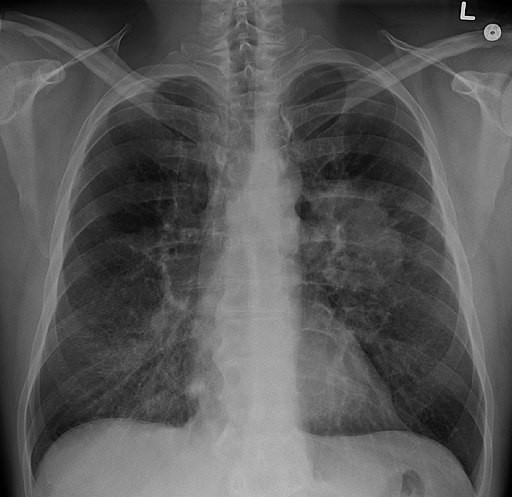Lung cancer remains one of the most common cancers in the world, accounting for the highest cancer-related deaths in the world. Understanding the mechanisms behind lung cancer progression is important in developing early diagnosis and strategies for cancer therapy and prevention.

Harnessing the Potential of RBM10
At Tulane University in New Orleans, Louisiana, scientists have discovered a previously unknown molecular pathway underlying lung cancer growth. Their discovery shows potential in developing more personalized lung cancer treatment.
Led by Translational Cancer Research Chair Dr. Hua Lu, the research team focuses on the function of a known tumor suppressor protein called RBM10. They found that it can inhibit the growth of lung cancer by suppressing the functions of c-Myc, a protein that drives tumor growth and proliferation when expressed.
The study revealed that RBM works with two ribosomal proteins, RPL5 and RPL11, in destabilizing c-Myc and impeding the spread of lung cancer. This research is also the first to identify a cancer-inhibiting relationship between the proteins.
Experts know a lot about cancer, but its molecular mechanisms remain a mystery. According to Lu, their study helps them better understand piece by piece.
Understanding the process of stopping lung cancer, progression can be compared to two factories in a cell with manufacturing parts for assembly into new protein machinery. The protein production process and cellular growth involve c-Myc, and humans couldn't live without it.
This manufacturing process is disrupted occasionally, causing the factories to begin producing incorrect parts. At the start of cancer formation, c-Myc is used to continue production, where the "spare parts" are allowed to accumulate and form cancer cells. With the help of RPL5 and RPL11, RBM10 can destabilize c-Myc and shut down tumor growth.
Moreover, it was discovered that a mutant form of RBM10, which loses the ability to suppress c-Myc, is usually found in lung cancers. This variation also fails to bind to the RPL5 and RPL11 ribosomal proteins and instead promotes tumor growth.
As Lu interpreted, cancer will mutate RBM10 and block its ability to suppress tumor growth when it wants to develop. In the future, Lu and his team plan to study the functions of RBM10 mutants to develop an anti-cancer drug against it.
How Does a Tumor Suppressor Work?
Tumor suppressors are forms of normal genes that protect our body from cancer. These genes make special proteins that halt cell growth that may cause cancer. They do this by instructing the cells to die at the right time in a process known as apoptosis or programmed cell death.
When these genes do not work properly, the cells can grow out of control and form cancer. In some cases, tumor suppressors mutate, causing the body's cells to multiply uncontrollably and develop into tumors.
Some people are born with one mutated tumor suppressor gene, which can develop later on in life. Having two mutated tumor suppressor genes increases the risk of developing certain cancers, such as breast cancer. Meanwhile, some individuals inherit abnormal tumor suppressor genes from their biological parents. Inheriting these genes does not mean a person will have cancer.
RELATED ARTICLE: More People Are Surviving Lung Cancer In America, Study Shows
Check out more news and information on Lung Cancer in Science Times.




![Earth's Quasi-Moon Kamo‘oalewa Could Originate From Lunar Surface Not Asteroid Belt [Study]](https://1721181113.rsc.cdn77.org/data/thumbs/full/53275/89/56/50/40/earths-quasi-moon-kamo-oalewa-could-originate-from-lunar-surface-not-asteroid-belt-study.png)









